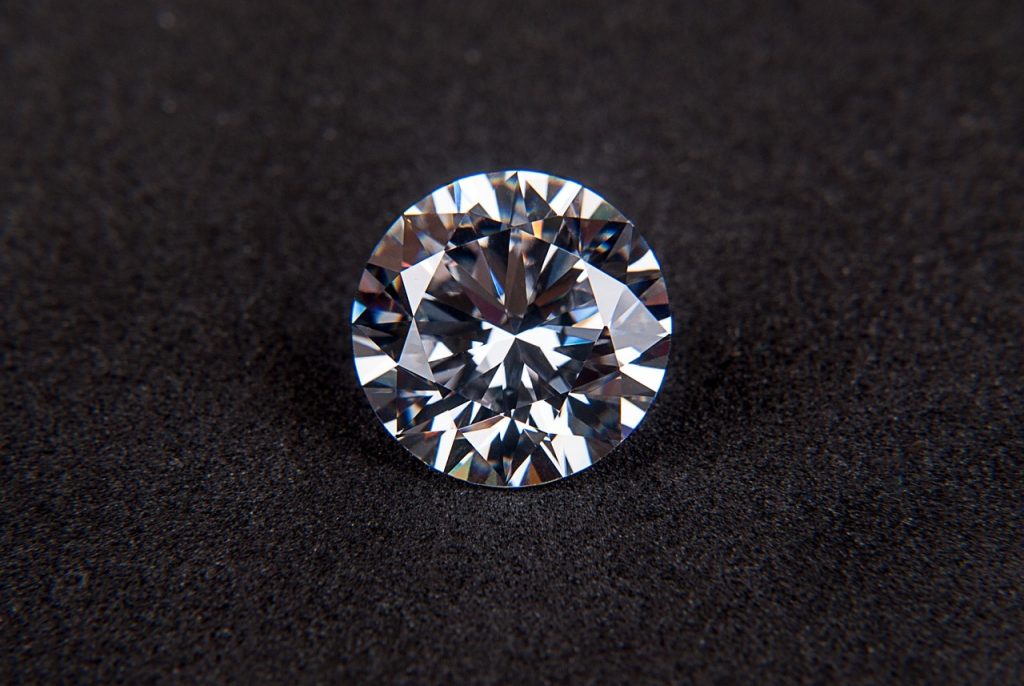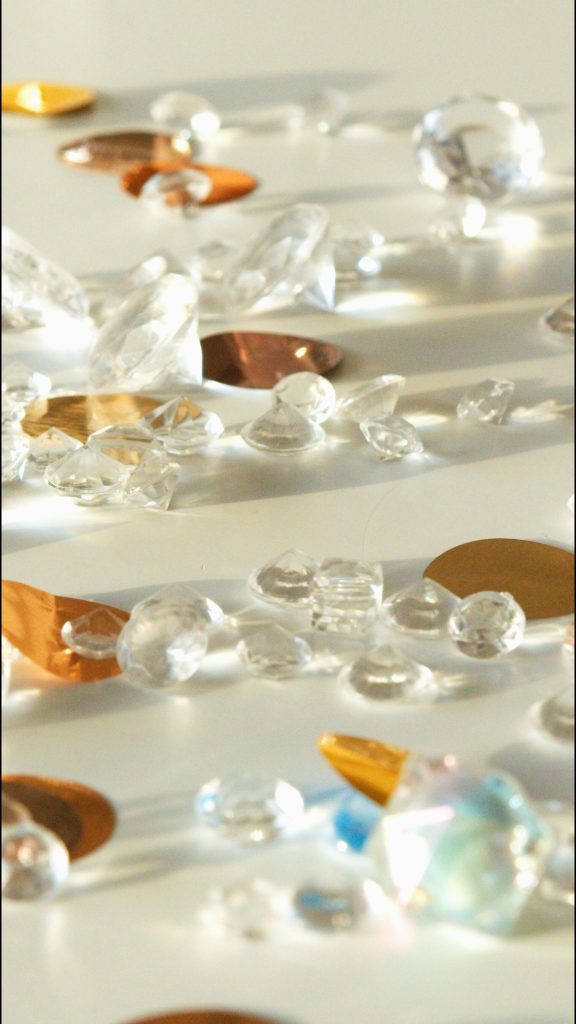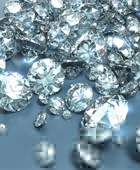1. Focusing Only on Carat Weight
One of the most common errors diamond buyers make is placing too much emphasis on carat weight while ignoring other essential aspects such as cut, color, and clarity. Carat weight refers to how much a diamond weighs, not necessarily how big it looks or how brilliant it appears. A poorly cut diamond of higher carat weight can look dull and unimpressive compared to a smaller, well-cut stone. For example, a 1.2-carat diamond with a poor cut may look smaller and less sparkly than a 1-carat diamond with an excellent cut. Buyers often believe bigger is better, but without considering proportion and quality, a larger diamond might not provide the desired visual impact. To avoid this mistake, it is crucial to understand the balance between the 4 Cs—cut, color, clarity, and carat—and prioritize quality over quantity when selecting a diamond.

2. Ignoring the Importance of Cut Quality
Many first-time buyers underestimate the significance of the cut, often confusing it with the diamond’s shape. However, the cut refers to how well a diamond has been shaped and faceted, directly affecting how it reflects light. Even a diamond with perfect clarity and color will appear dull if it has a poor cut. The cut impacts brightness (white light reflection), fire (dispersion of light into colors), and scintillation (sparkle when moved). For this reason, a well-cut diamond can appear more brilliant and lively than a larger diamond with a lower cut grade. To avoid this pitfall, always prioritize cut quality—terms like “Excellent” or “Ideal” are indicators of a superior cut. Reviewing grading reports from reputable laboratories like GIA or AGS can provide valuable insight into a diamond’s cut proportions, symmetry, and polish, ensuring that you’re purchasing a stone with maximum visual performance.
3. Not Requesting or Reviewing Certification
Purchasing a diamond without verified certification is a significant misstep that can result in overpaying for a lower-quality stone or even acquiring a diamond that is misrepresented. Reputable grading reports from institutions such as the Gemological Institute of America (GIA) or the American Gem Society (AGS) provide objective analysis and measurements of a diamond’s cut, color, clarity, and carat weight. These certifications act as a safeguard for the buyer, establishing the diamond’s authenticity and helping ensure fair pricing. Unfortunately, some buyers rely on in-house or unverifiable appraisals, which can be biased or inaccurate. Always request to see the certification before purchasing and ensure it is from a well-recognized authority. Be wary of vague documentation or sellers who downplay the need for third-party grading. Taking this step will protect your investment and provide transparency in what you’re buying.
4. Overlooking the Reputation of the Seller
Another prevalent mistake is purchasing diamonds from unknown or unverified sellers without researching their reputation. The diamond industry, while regulated, still has sellers that may offer misleading information, inflate prices, or sell stones with dubious provenance. A reliable seller should be transparent about their diamonds, provide verifiable certifications, offer return policies, and have solid customer reviews. Whether purchasing from a physical store or an online platform, buyers should check third-party reviews, look into the seller’s history, and confirm their accreditation with professional organizations like the Jewelers of America or Better Business Bureau. Some buyers are enticed by seemingly good deals from unverified sources, only to find out later that they paid too much for a subpar diamond. To prevent this, work with well-established retailers or vendors known for ethical practices and customer service, especially those that allow independent appraisals before finalizing the purchase.
5. Forgetting to Compare Prices and Shop Around
Rushing into a purchase without comparing prices is a mistake that often leads to overpaying or settling for a lower-quality diamond. Many buyers assume that diamonds are priced uniformly, but in reality, pricing can vary significantly depending on the seller, location, and brand markup. Two diamonds with nearly identical specifications on paper can differ in price by hundreds or even thousands of dollars. Therefore, it is vital to shop around, both online and in brick-and-mortar stores, to get a clear understanding of the market rate for specific diamond characteristics. Utilize online comparison tools and request price breakdowns when speaking with jewelers. Always ensure you’re comparing diamonds with matching certifications, cut grades, and other measurable qualities. Investing time in comparing prices gives you better bargaining power and a broader view of what’s available within your budget, ultimately leading to a more informed purchase.

6. Underestimating the Importance of Clarity and Color Balance
While carat and cut often draw more attention, clarity and color significantly influence a diamond’s appearance and value. Some buyers believe that only flawless diamonds are worth purchasing, leading them to overspend unnecessarily. Others neglect these characteristics entirely, resulting in the selection of stones that appear visibly cloudy or tinged. In truth, clarity and color can be strategically balanced to maximize beauty without overextending your budget. For example, a VS2 (Very Slightly Included) clarity grade may appear identical to higher grades when viewed with the naked eye, offering better value. Similarly, a near-colorless diamond in the G–H range can look virtually identical to a D-grade stone once set. The key is knowing where to compromise without affecting appearance. Buyers should also view diamonds under natural lighting or daylight-equivalent sources to get an accurate perception. By understanding which flaws are visible and which are not, buyers can make smarter, budget-conscious decisions.
7. Not Considering the Setting’s Effect on Appearance
A common oversight is failing to recognize how a diamond’s setting can dramatically affect its overall look and performance. The setting plays a critical role not only in the aesthetics of a piece but also in the diamond’s security and perceived size. For example, bezel settings may offer a more modern look and increased protection, but they can obscure the stone’s brilliance compared to prong settings, which allow more light to pass through. Additionally, certain settings can make a diamond appear larger—such as halo settings, which surround the center stone with smaller diamonds to enhance its size visually. The choice of metal also affects perception; white metals can enhance a diamond’s brightness, while yellow gold may lend warmth but make lower-color grades appear yellower. Buyers should always view the diamond in various settings and consult professionals about how the design impacts both durability and beauty before finalizing their choice.
8. Skipping an Independent Appraisal
Even when purchasing a certified diamond from a reputable seller, failing to obtain an independent appraisal can be a critical mistake. Certification outlines the stone’s specifications, but it does not assign a market value. An independent appraisal helps assess whether the asking price is fair and is especially important for insurance purposes. Many buyers assume that certification is sufficient, but appraisals provide a second layer of financial protection. Moreover, an independent appraiser can detect treatments, damage, or inclusions that may not be adequately disclosed by the seller. It is advisable to hire a professional appraiser unaffiliated with the retailer, preferably one accredited by organizations like the American Society of Appraisers (ASA) or the National Association of Jewelry Appraisers (NAJA). An appraisal can also offer peace of mind by ensuring the diamond’s characteristics match what was promised, potentially saving you from an expensive mistake.
9. Failing to Set a Realistic Budget and Stick to It
Another frequent misstep is going diamond shopping without a firm, realistic budget. Without defined financial boundaries, it’s easy to be swayed by high-pressure sales tactics or dazzled by larger, higher-priced stones that offer only marginal improvements in visual quality. Many buyers also forget to account for the cost of the setting, taxes, and insurance, which can significantly increase the total price. As a result, they may either overspend or compromise in areas that matter most. The solution is to conduct preliminary research and determine your maximum budget before stepping into a store or browsing online. Know which characteristics are most important to you—be it size, brilliance, or ethical sourcing—and allocate your budget accordingly. Some online retailers offer filtering tools that allow you to stay within your price range while still viewing high-quality options. Setting limits and sticking to them helps ensure you make a thoughtful, not impulsive, investment.
10. Overlooking Ethical and Environmental Considerations
In today’s conscientious marketplace, ignoring the ethical and environmental origins of diamonds is a mistake that may have moral and even financial repercussions. Conflict or “blood” diamonds, which are mined under exploitative or violent conditions, remain a concern despite international efforts like the Kimberley Process. Buyers who are unaware of sourcing practices may unintentionally support unethical supply chains. Furthermore, a growing number of consumers now prioritize sustainability, giving rise to the popularity of lab-grown diamonds, which are chemically identical to mined ones but have a significantly smaller environmental footprint. Asking questions about a diamond’s provenance and seeking certification from third-party ethical verification bodies (e.g., CanadaMark, SCS-007 sustainability certification) can help ensure your purchase aligns with your values. Ethical considerations are becoming increasingly tied to resale value and public perception, making them a critical factor in long-term investment. Buyers who proactively research sourcing gain peace of mind and help support responsible practices in the industry.




